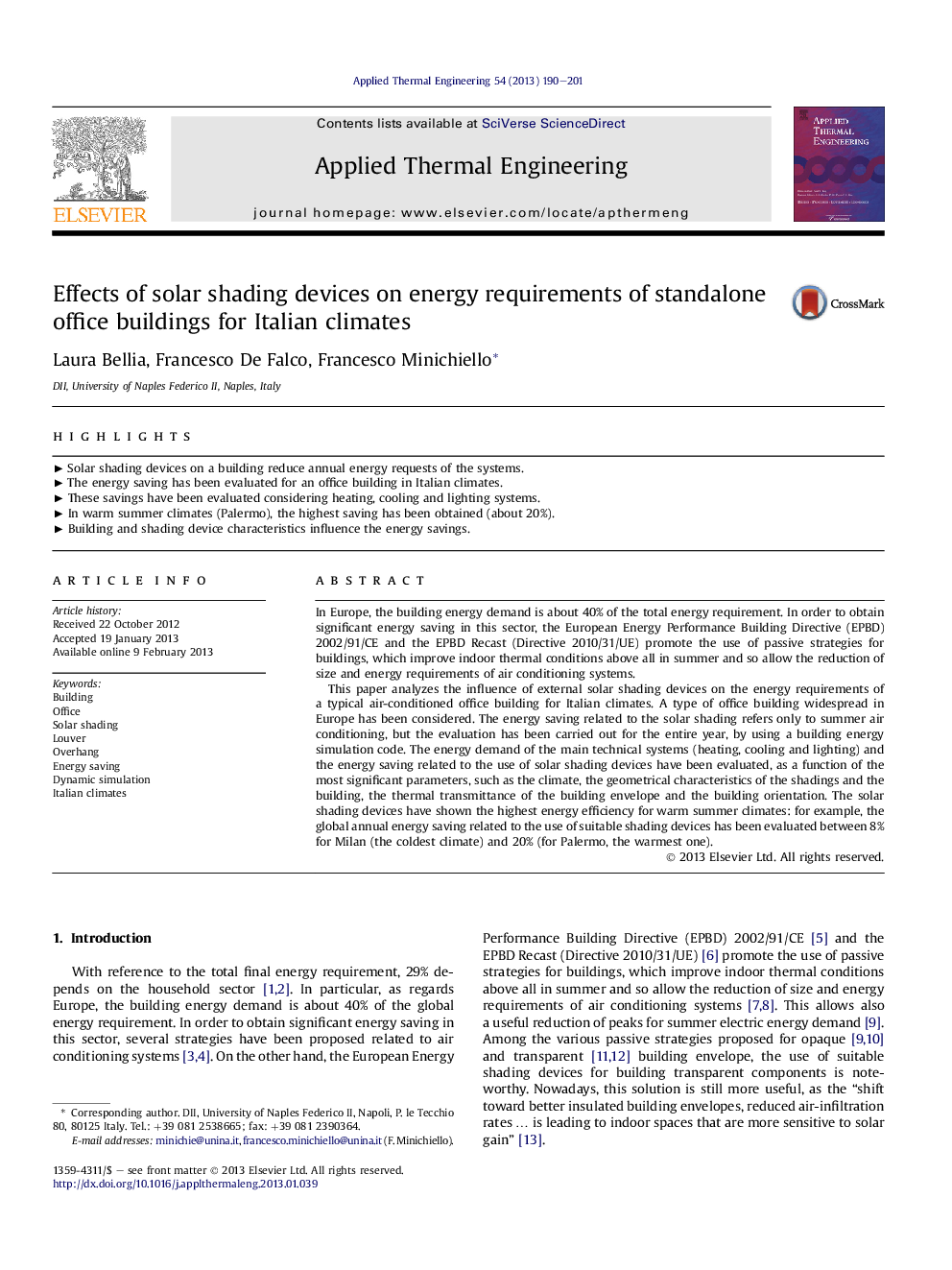| کد مقاله | کد نشریه | سال انتشار | مقاله انگلیسی | نسخه تمام متن |
|---|---|---|---|---|
| 646875 | 884574 | 2013 | 12 صفحه PDF | دانلود رایگان |

In Europe, the building energy demand is about 40% of the total energy requirement. In order to obtain significant energy saving in this sector, the European Energy Performance Building Directive (EPBD) 2002/91/CE and the EPBD Recast (Directive 2010/31/UE) promote the use of passive strategies for buildings, which improve indoor thermal conditions above all in summer and so allow the reduction of size and energy requirements of air conditioning systems.This paper analyzes the influence of external solar shading devices on the energy requirements of a typical air-conditioned office building for Italian climates. A type of office building widespread in Europe has been considered. The energy saving related to the solar shading refers only to summer air conditioning, but the evaluation has been carried out for the entire year, by using a building energy simulation code. The energy demand of the main technical systems (heating, cooling and lighting) and the energy saving related to the use of solar shading devices have been evaluated, as a function of the most significant parameters, such as the climate, the geometrical characteristics of the shadings and the building, the thermal transmittance of the building envelope and the building orientation. The solar shading devices have shown the highest energy efficiency for warm summer climates: for example, the global annual energy saving related to the use of suitable shading devices has been evaluated between 8% for Milan (the coldest climate) and 20% (for Palermo, the warmest one).
► Solar shading devices on a building reduce annual energy requests of the systems.
► The energy saving has been evaluated for an office building in Italian climates.
► These savings have been evaluated considering heating, cooling and lighting systems.
► In warm summer climates (Palermo), the highest saving has been obtained (about 20%).
► Building and shading device characteristics influence the energy savings.
Journal: Applied Thermal Engineering - Volume 54, Issue 1, 14 May 2013, Pages 190–201